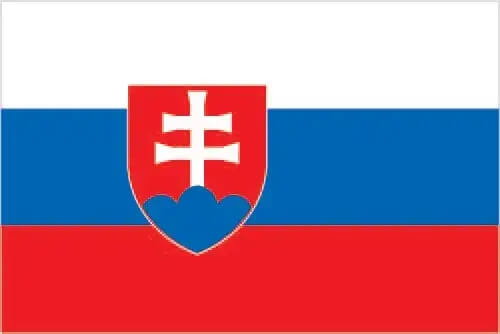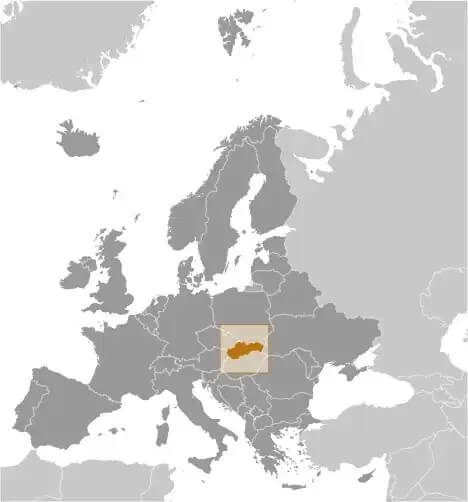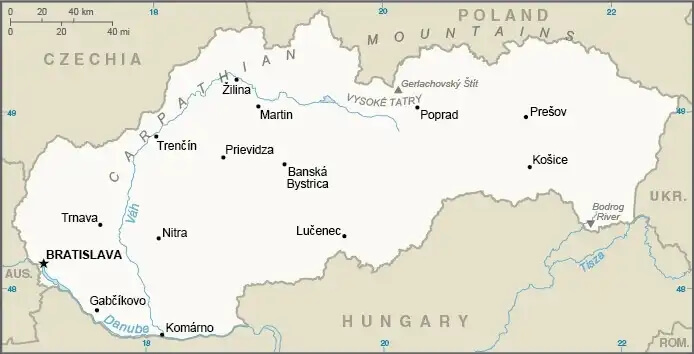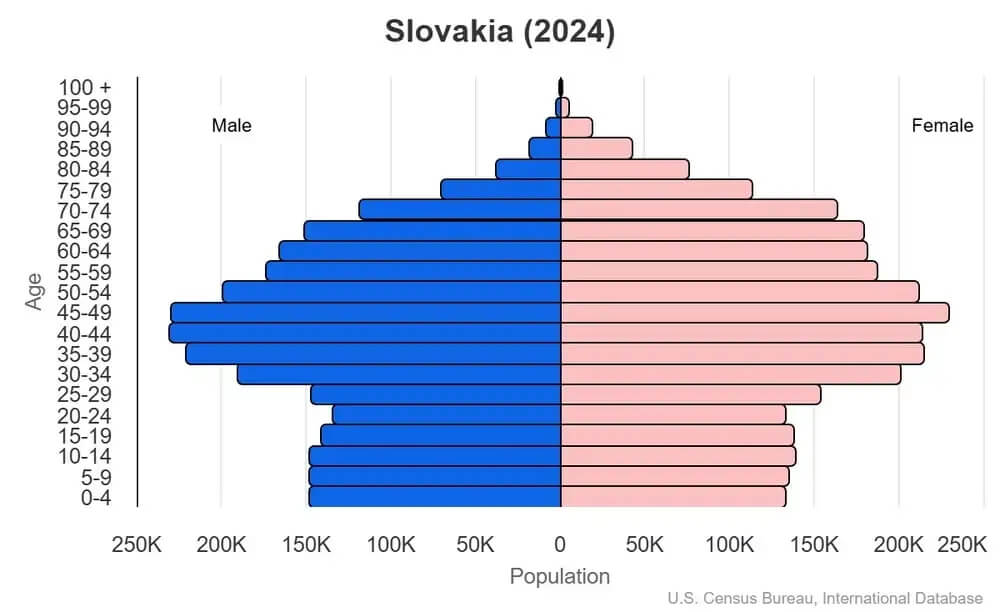World Book
Slovakia
World Book Index
76


With a score of 76, the country is ranked 39th out of 158 countries in the World Book ranking. (more information)
Introduction
Background
Slovakia traces its roots to the 9th century state of Great Moravia, followed soon after by the Hungarian Kingdom and, in 1859, the Austro-Hungarian Empire. After World War I, the Empire dissolved, and the Slovaks joined the Czechs to form Czechoslovakia. In 1993, Czechoslovakia underwent a nonviolent "velvet divorce" into its two national components, Slovakia and the Czech Republic.
Geography
Area
total : 49,035 sq km
land: 48,105 sq km
water: 930 sq km
Climate
temperate; cool summers; cold, cloudy, humid winters
Natural resources
lignite, small amounts of iron ore, copper and manganese ore; salt; arable land
People and Society
Population
total: 5,563,649 (2024 est.)
Ethnic groups
Slovak 83.8%, Hungarian 7.8%, Romani 1.2%, other 1.8% (includes Czech, Ruthenian, Ukrainian, Russian, German, Polish), unspecified 5.4% (2021 est.)
Languages
Slovak (official) 81.8%, Hungarian 8.5%, Roma 1.8%, other 2.2%, unspecified 5.7% (2021 est.)
Religions
Roman Catholic 55.8%, Evangelical Church of the Augsburg Confession 5.3%, Greek Catholic 4%, Reformed Christian 1.6%, other 3%, none 23.8%, unspecified 6.5% (2021 est.)
Population growth rate
-0.08% (2024 est.)
Government
Government type
parliamentary republic
Capital
name: Bratislava
Executive branch
chief of state: President Peter PELLEGRINI (since 15 June 2024)
head of government: Prime Minister Robert FICO (since 25 October 2023)
Diplomatic representation in the US
chief of mission: Ambassador Radovan JAVORČÍK (since 18 January 2021)
Diplomatic representation from the US
chief of mission: Ambassador Gautam A. RANA (since 28 September 2022)
Economy
Economic overview
high-income EU and eurozone economy; manufacturing and exports led by automotive sector; growth supported by private consumption and public investment from EU funds, tempered by trade risks; increased taxes and withdrawal of energy subsidies contributing to rising but manageable inflation; strong labor demand and influx of foreign labor offsets aging workforce
Real GDP (purchasing power parity)
$218.762 billion (2024 est.)
$214.343 billion (2023 est.)
$209.794 billion (2022 est.)
Real GDP per capita
$40,300 (2024 est.)
$39,500 (2023 est.)
$38,600 (2022 est.)
Exports
$120.355 billion (2024 est.)
$122.04 billion (2023 est.)
$114.519 billion (2022 est.)
Exports - partners
Germany 20%, Czechia 10%, Hungary 7%, USA 6%, Poland 6% (2023)
Exports - commodities
cars, vehicle parts/accessories, video displays, broadcasting equipment, refined petroleum (2023)
Imports
$120.29 billion (2024 est.)
$119.739 billion (2023 est.)
$121.473 billion (2022 est.)
Imports - partners
Germany 16%, Czechia 14%, Poland 8%, China 7%, Hungary 6% (2023)
Imports - commodities
vehicle parts/accessories, broadcasting equipment, cars, plastic products, insulated wire (2023)
Human Development Index
The country's Human Development Index (HDI) is 0.880, ranking it 44th out of 193 countries tested. (more information)
World Happiness Report
The World Happiness Report ranked the country 37th out of 158 countries tested with a score of 6.411. (more information)



